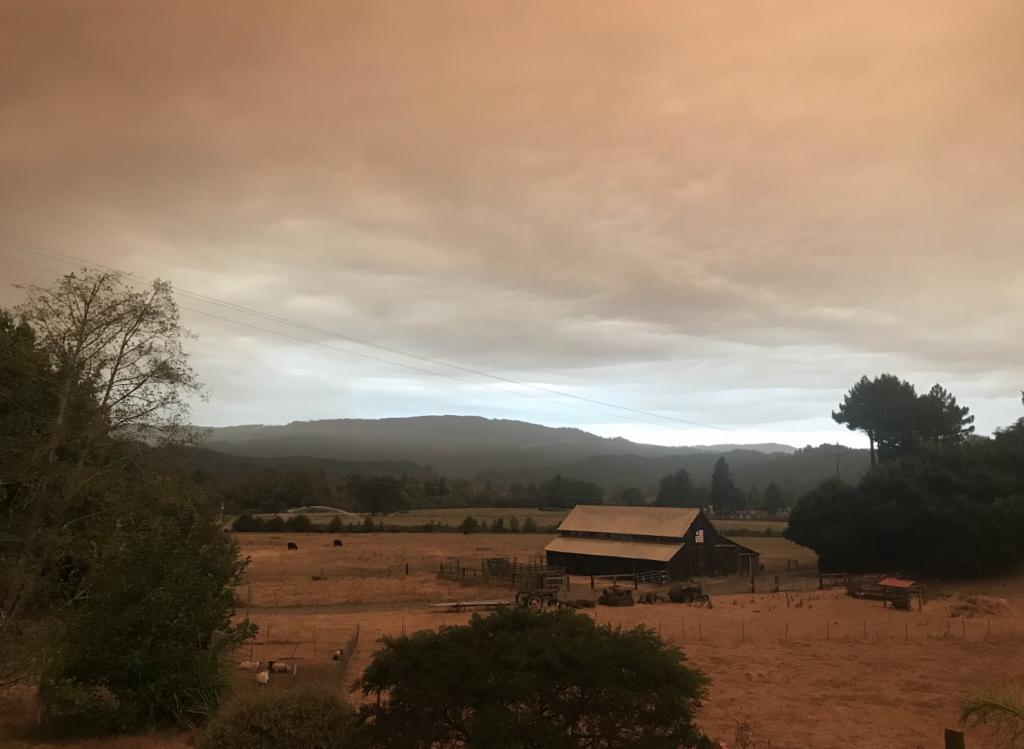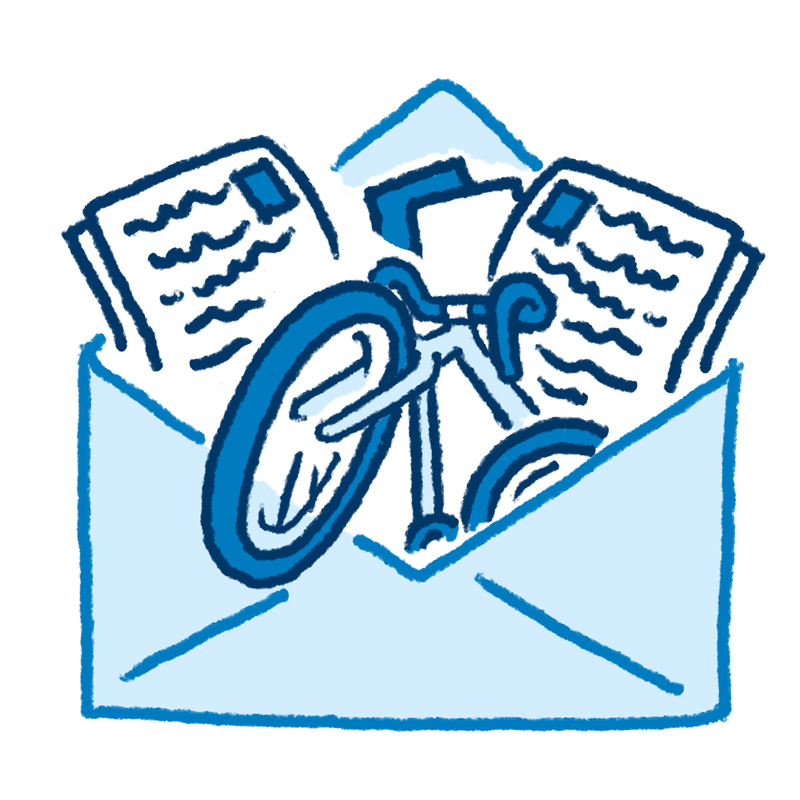Bike Touring During Wildfire Season: What to Know and When To Bail
Climate change is increasing North America’s dramatic wildfires each year, with apocalyptic smoke-darkened skies and scorched landscapes. In 2021, smoke from California wildfires reached as far as New York City, while ashes from Colorado fires fell on coastal regions. “Unfortunately, because smoke can travel thousands of miles, you don’t have to be close to the fires [to be adversely affected] by wildfire smoke,” said Dr. Mary Prunicki, director of air pollution and health research at the Sean N. Parker Center for Allergy and Asthma Research, in an interview with the Washington Examiner.
Recent studies suggest that particulates in wildfire smoke are 10 times more harmful to humans than car exhaust. The majority of wildfire smoke is made up of particulate matter with a diameter of 2.5 micrometers, called PM 2.5. These particles are so tiny that 30 of them equal the width of one human hair. Invisible to the naked eye, they can infiltrate our lungs and our bloodstream, impacting our immune system and central nervous system. “Air pollution that comes from wildfires affects every organ in our body,” says Aaron Bernstein, who leads the Harvard T.H. Chan School of Public Health’s Center said in an interview with Outside Online.

Between wildfires and the resulting smoke plumes, plans for pedal-powered adventures might need to be altered. Dr. John Balmes, a California air pollution researcher and spokesperson for the American Lung Association, says, “The worst thing to do is to go exercise like running or biking when the air quality is bad, because that increases your dose of exposure to the wildfire smoke. People often start breathing through the mouth and bypass the filtering mechanism of the nose.” Supporting this claim is another study that shows that particles inside the body were 4.5 times higher during exercise than at rest.
Is it Helpful to Wear a Respirator or Mask?
N95 masks can filter out PM2.5, but the fit has to be tight, over the nose and mouth with no gaps. It should be collapsing somewhat when you breathe in. To me, that sounds very uncomfortable, limiting, and reserved for emergency situations, like when smoke moves in unpredictably on a bike tour.
Post-pandemic, I carry an N95 mask with me all the time. They are lightweight and take up no room, so why not pack one? If you are traveling during fire season (which is lengthening every year), carry a mask. If you’re curious about the feasibility of other masks, the Guardian published a review of cycling masks in 2015, with London’s air pollution in mind.
Understand Where the Smoke is Coming From
The government’s Fire and Smoke Map can help you see the origin and trajectory of the smoke. Then you can assess how it might impact your route. If you are riding an Adventure Cycling route, you can toggle the Fire Data and National Interagency Fire Center Incident Data layers at the bottom of the Interactive Network Map.
Dr. Tod Olin, a pulmonologist and director of the Exercise Breathing Center at National Jewish Health, recommends watching the Air Quality Index (AQI) for your specific location. The EPA updates the AQI hourly on AirNow, and there is an app for smartphones. The index is worth printing out and keeping in your handlebar bag.

When the direction of the wind changes, so does the path of the smoke. Keeping an eye on the wind direction in the weather forecast can help you predict where smoke will travel next. If the air is stagnant or blowing from the direction of a nearby fire, consider waiting until the wind picks up from a different direction.
Dr. Olin’s recommendation is simple: Identify an AQI number that becomes your own personal no-go number, (likely between 101-200). If you have symptoms of inhaling particulate matter such as stinging eyes, runny nose, coughing, sinus irritation, wheezing or shortness of breath, these are indicators that you are at your own AQI no-go number. Other indicators are headaches, fatigue, and fast heartbeat. Once you see that number, or experience those symptoms, abandon the mission and reroute.The stress of wildfire smoke on your body can be cumulative, so what feels comfortable one day might be difficult to bike in the next.
Know How to Reroute (and When You Should Turn Around)
Before you leave, check your route to identify potential bail-out points. Research if these intersect with a bus or train line. This level of planning is helpful when smoke blows in, but also a variety of other situations. Years ago, when I was cycling south from San Francisco, the wind blew me off my bike—not once but twice. With wet feet, bruised elbows and deflated ego, I got on a bus. The next day was a glorious ride.
If you are on a longer trip (Southern Tier, Great Divide, etc.) consider taking a bus or train around a smoky section and returning to that area at a different time of year. Spring can be a magical and low-fire risk time to ride. Plus you’ll often have better water access and get to see wildflower blossoms. Aligning your route with the Amtrak train line is a good option, especially since they have options for transporting your bike for nominal fees. Check Amtrak train routes across the U.S. here and check here for more details about bikes as luggage.
It’s never easy to alter your journey, especially when you’ve been looking forward to it, and spent time and energy planning and organizing. It can be physically, mentally, and emotionally challenging. But when it comes to smoke, protecting our lungs for years to come is worth a little rerouting now.

After years of touring in the U.S. and abroad, I now accept that a change in plans is all part of the plan. In 2020, the pandemic sent me home from remote Patagonia. I was 14 months into cycling around the world solo, a life dream I had held since 2010. Yes, I cried. Before that, illnesses turned my timelines upside down. More recently, visa issues forced me to travel in the opposite direction. I’ve learned to deal with the disappointment, mourn the loss of what was to be, and get on to planning the next trip.
After being at home in California for almost three years, I went back to Patagonia in 2023, exactly where I left off. I have continued pedaling around the world, to the tip of South America, then Africa, and now Europe. Restarting wasn’t easy, but neither was starting in the first place. If I can do it, trust me, you can too. When the smoke settles and the path forward is free and clear, you will ride again.


